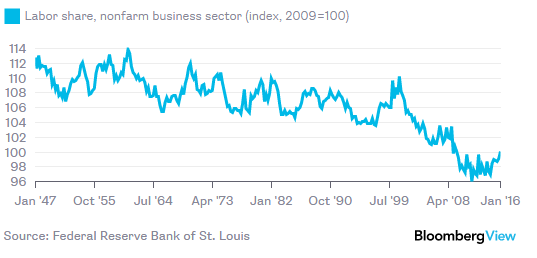Studies in this week’s Hutchins Roundup conclude that expansion of the central bank’s balance sheet may be less consequential for financial stability than conventional monetary policy, higher gas prices do not drive consumers’ inflation expectations, and more.
Quantitative easing may be less of a threat to financial stability than previously thought
Using a novel monetary policy model, Michael Woodford of Columbia University finds that, for any given increase in aggregate demand, expansion of the central bank’s balance sheet, or quantitative easing, increases risks to financial stability less than cutting interest rates or relaxing macro-prudential constraints such as reserve requirements. He also finds that combining quantitative easing with a tightening of macro-prudential policy may be preferable to conventional monetary policy because it has an expansionary effect with a smaller risk to financial stability.
Higher gas prices do not drive consumer inflation expectations
Using panel microdata from the University of Michigan Survey of Consumers, Carola Binder of Haverford College concludes that consumers do not overweight gas prices when forming inflation expectations and do not expect gas price inflation to lead to an increase in core inflation, a measure that excludes volatile food and energy prices. If gas price inflation increases by one percentage point, then one-year-ahead expectations of total inflation in the economy increase by about 0.01 percentage point and five-year-ahead inflation expectations increase negligibly. Thus, movements in gas prices cannot explain the rise in household inflation expectations from 2009 to 2011.
Expectations of CFOs and equity analysts are irrational but predict firm investment
Combining data on chief financial officers and equity analysts’ expectations with firm data, Nicola Gennaioli and Yueran Ma of Bocconi University and Andrei Shleifer of Harvard University find that, contrary to standard theory, firms’ investment decisions are driven by expectations of earnings growth more than by traditional variables like the discount rate or Tobin’s Q. They also find that these expectations are extrapolated from recent performance and are subject to recurring errors: Analysts and CFOs tend to be excessively optimistic in good times and excessively pessimistic in bad times.
Chart of the week: Labor’s share has been on downward path for years, has perked up recently
Quote of the week: “We have shown in the past that we can be very creative within our mandate,” says European Central Bank official Peter Praet
“When people ask: ‘Are you ready for a new shock?’, I always answer: trust us, we always find the means within the scope of our mandate. Some of the measures we took in March … have not even started being implemented. So we still have accommodation in the pipeline…In our guidance on interest rates we have said that rates will remain at present or lower levels. So this means that interest rates are still in the tool box. The question is of course the conditions under which we would decide to use that instrument, because it is clear that the negative rates at some point have also side effects that start to become more important, namely on the profitability of banks. But, on balance, the positive impact is dominating, that was our judgement.”
— Peter Praet, Member of the Executive Board of the European Central Bank




Commentary
Hutchins Roundup: Quantitative easing, gas price inflation, and more
June 2, 2016